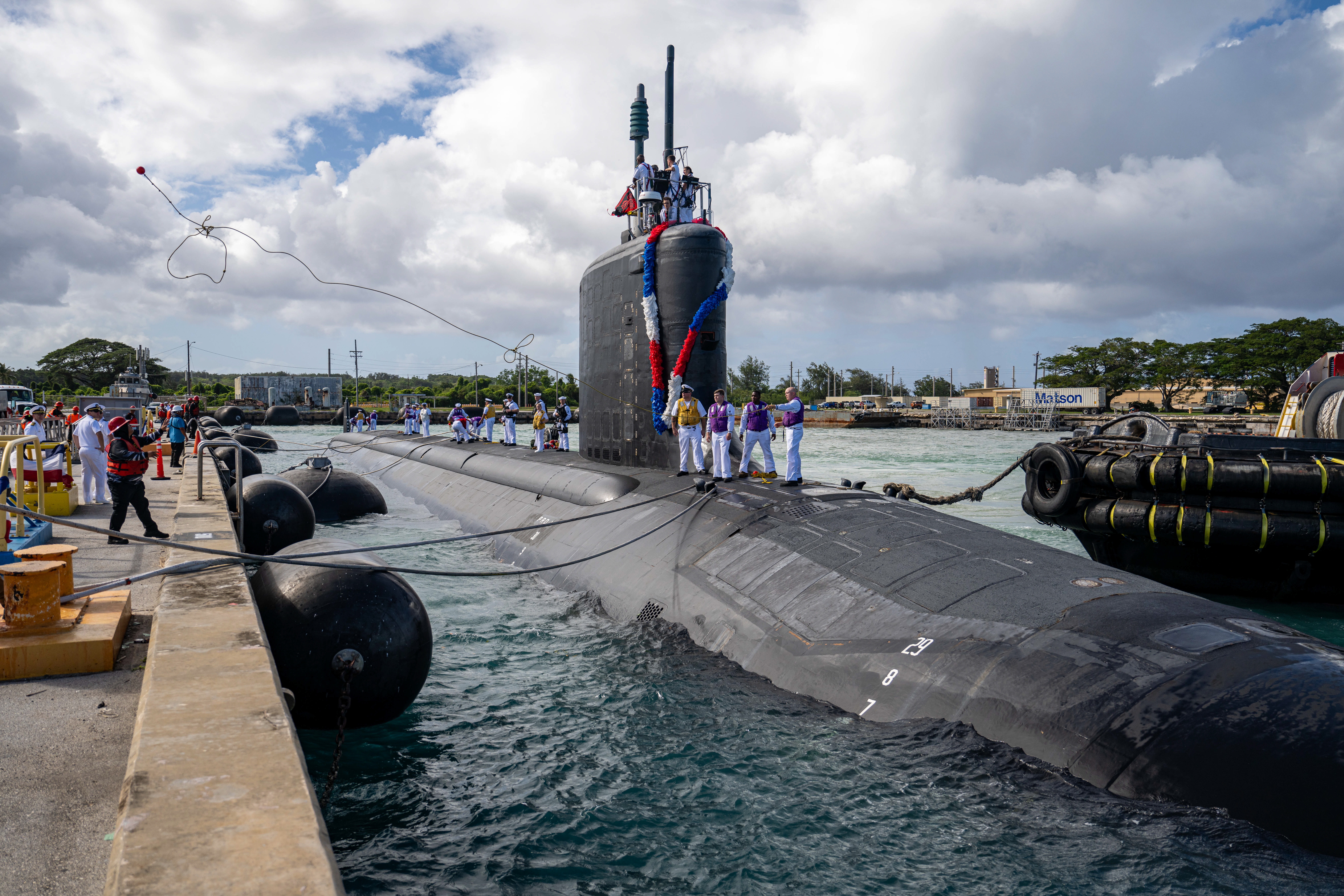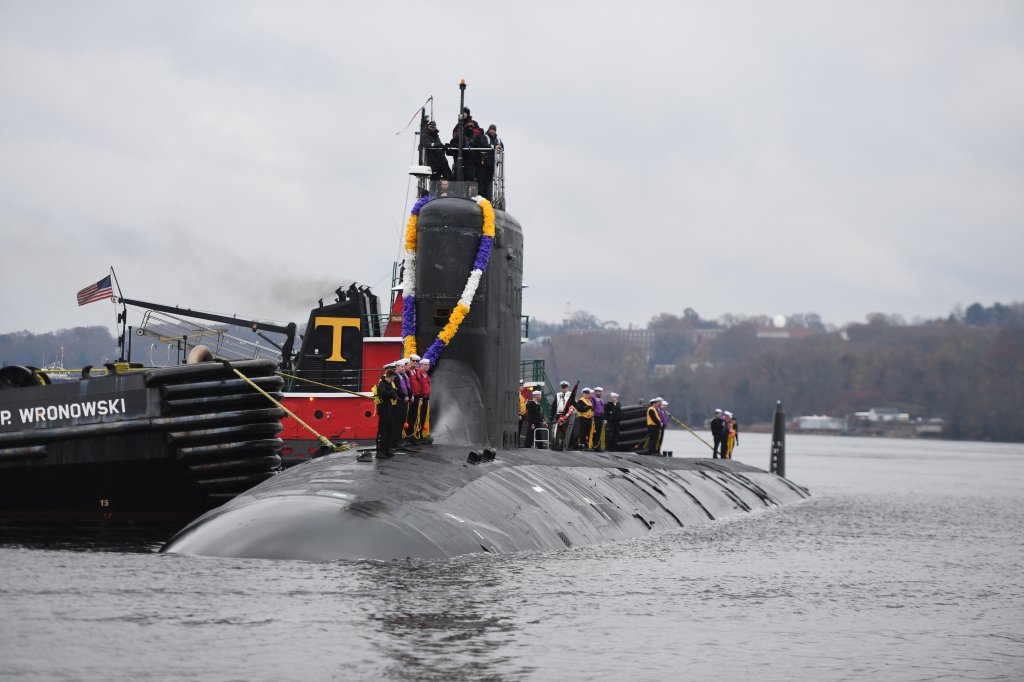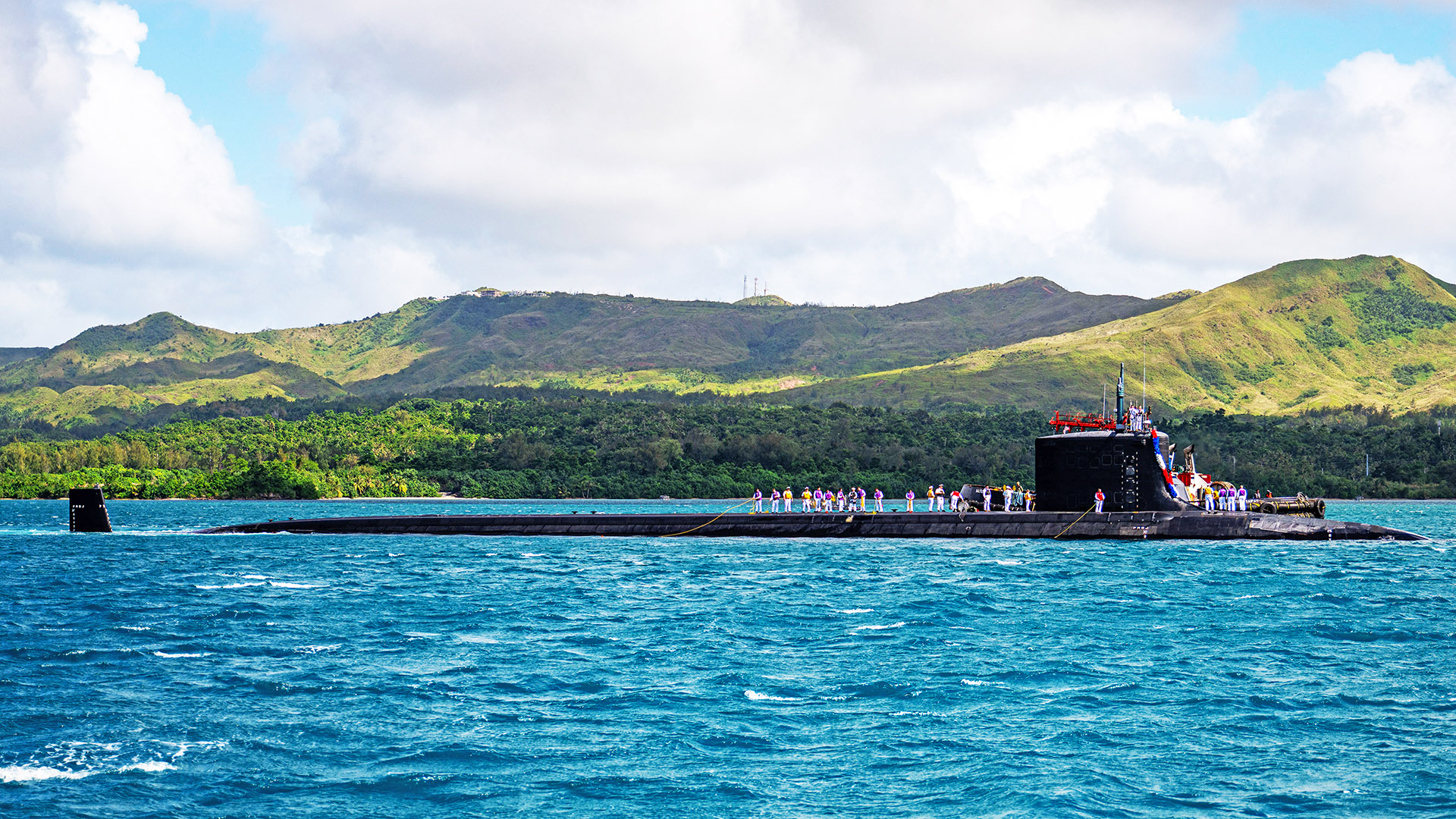The U.S. military’s plans to build up its forces on the island of Guam received some added firepower Tuesday with the arrival of the Virginia-class attack submarine USS Minnesota (SSN-783), the first of its class to be forward-based at the United States’ vital outpost in the Western Pacific.
Billed as part of the Navy’s “strategic laydown plan for naval forces in the Indo-Pacific region,” the Minnesota will fall under the command of Submarine Squadron 15, which is currently comprised of the Los Angeles-class submarines USS Annapolis, USS Asheville, USS Jefferson City and USS Springfield — elder boats that were all commissioned in the early 1990s.
Minnesota – which had been based at Joint Base Pearl Harbor-Hickam since 2022 – has the ability to take on anti-submarine, anti-surface and strike warfare, along with intelligence, surveillance and reconnaissance (ISR) missions. It will bolster what is a rapidly expanding array of U.S. military offensive and defensive capabilities on the 30-mile-long, nine-mile-wide island.
“The security environment in the Indo-Pacific requires that the U.S. Navy station the most capable units forward,” the sea service said in a statement announcing Minnesota’s new home port. “This posture allows flexibility for maritime and joint force operations, with forward-deployed units ready to rapidly respond to deter aggression and promote a peaceful and prosperous Indo-Pacific region.”

The boat will certainly bring fresh capability to the island’s submarine roster. In addition to its 12 individual Vertical Launch System (VLS) tubes that pack Tomahawk cruise missiles, as well as the ability to employ dozens of torpedoes, Virginia-class submarines can support special operations missions.
The Virginia-class also features a ‘fly-by-wire’ control system that makes it easier to handle the submarine in shallow water and other complex littoral environments. This is especially advantageous for operating in areas like the South China Sea.
Minnesota’s home port shift to Guam “adds a next-generation attack submarine with advanced capabilities to the forward-deployed naval force,” Lt. Cmdr. Rick Moore, a Submarine Force Pacific spokesperson, told TWZ Tuesday.
The arrival of the 11-year-old Minnesota also provides another real-world signal of the workhorse Los Angeles-class fast-attack fleet’s continuing retirement, as more Virginia-class submarines come online to replace those aging boats.

There are now 23 Virginia-class submarines on active duty, one more than the current 22 in the Los Angeles fleet, Navy officials told TWZ.
While Virginia-class submarines operate throughout the Pacific, having one permanently stationed at Guam, with the infrastructure to support that basing, means that the Navy will be able to better sustain the class’s operations from there. This development could play a role in the trilateral agreement between the U.S., U.K. and Australia – known as AUKUS – to eventually get Canberra Virginia-class subs of its own.
Guam is also already serving as a hub for submarine activity, as well as some maintenance and repair work. For instance, when the Seawolf-class submarine Connecticut struck a seamount while operating in the South China Sea in October 2021, it made a prolonged emergency stop in Guam before heading to Puget Sound Naval Shipyard in Washington state.

The Minnesota’s home port shift comes as debate has resurfaced about arming the Virginia-class fleet with nuclear cruise missiles. As TWZ reported last week, supporters of the Sea-Launched Cruise Missile (SLCM-N) program argue that it will give the president another nuclear response option against adversaries, while detractors contend that the program is a waste of finite Navy resources. President-elect Donald Trump began the program in 2018, and it was marginalized by the Biden White House, even as Congress continued to fund the effort and the Navy proceeded. Whether the effort will receive extra focus after Trump is inaugurated remains to be seen.
Still, the inclusion of SLCM-N could give forward-deployed Virginia-class boats a much greater strategic weight that is simply not a factor now. They would also pose a far greater risk to the enemy and would be prioritized even higher for targeting.
And as the Minnesota gives INDOPACOM greater Guam-based undersea capabilities, the island is also shaping up to become the most heavily defended piece of turf on the planet in the coming years.
Among those initiatives, TWZ reported in October that the military had released images of a Mk 41 vertical launch system (VLS) for the Aegis Ashore air defense system that had been installed there. Those land-based launchers are part of a broader effort to shore up the defenses of U.S. military bases, particularly when it comes to an attack from China, which has directly referenced such a scenario should full-blown war break out in the region. In addition to Naval Base Guam, the island hosts Andersen Air Force Base and Marine Corps Base Camp Blaz, which is taking on Marines from Okinawa.
We likely won’t ever learn much about what missions the Minnesota undertakes while stationed in Guam. The so-called “silent service” isn’t big on public disclosure. But the submarine’s basing in the West Pacific undeniably offers another arrow in INDOPACOM’s quiver, and signals the importance the island and its assets will play should war with China erupt.
Contact the author: geoff@twz.com
